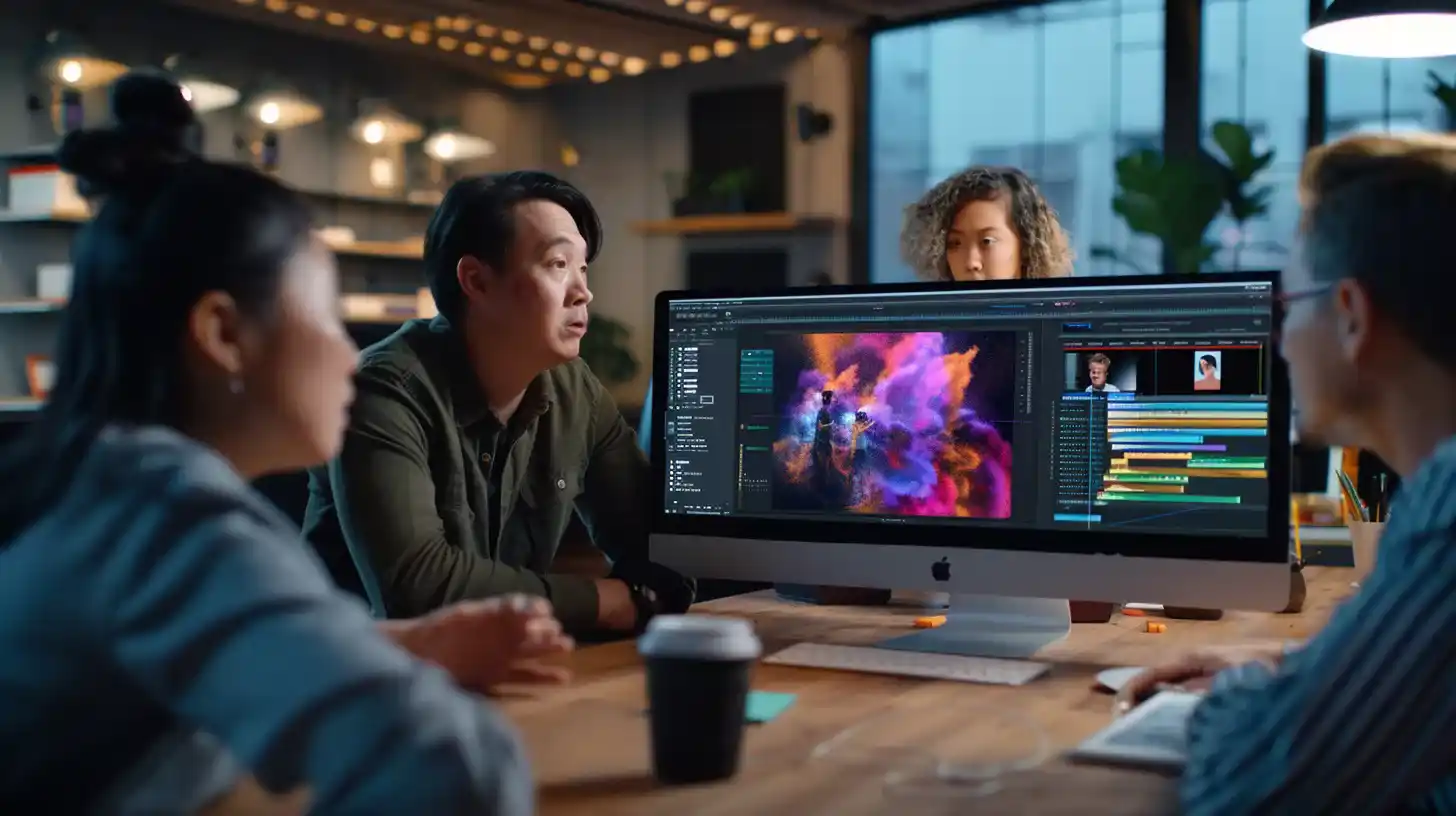Table of Contents
AI Video Editing: Adobe’s Premiere Pro, a cornerstone of the video editing world, is set to receive a significant upgrade this year with the introduction of AI-powered video editing tools. This move leverages the growing power of generative AI models to streamline workflows and enhance creative possibilities for video editors.
The Power of AI Video Editing in Premiere Pro
The centerpiece of this update is Adobe’s own generative AI model within the Firefly family. This model will unlock new functionalities within Premiere Pro, including:

- Object Addition and Removal: With text prompts similar to Photoshop’s Generative Fill feature, editors can seamlessly add or remove objects from video footage. This allows for efficient edits like removing unwanted background elements or adding subtle details to enhance a scene.
- Video Clip Extension: Short clips can be extended naturally using AI, eliminating the need for awkward cuts or repetitive footage. This is particularly beneficial for situations where a few extra seconds of a scene are crucial for storytelling.
- Generative Video Creation: While still in the early stages, Adobe is exploring the integration of third-party AI models like OpenAI’s Sora for generating video content based on text descriptions. This opens doors for creating B-roll footage or even entire scenes using AI-powered tools.
Transparency and Collaboration Of AI Video Editing
A critical aspect of Adobe’s approach is transparency. The company plans to implement its Content Credentials labels to identify the specific AI models used in generating video clips within Premiere Pro. This ensures clarity and fosters trust within the editing community.
Furthermore, Adobe acknowledges the potential of third-party AI tools. While the integration of models like Sora and Pika Labs‘ offering remains an “early exploration,” it signifies a willingness to collaborate and offer Premiere Pro users a broader range of AI-powered options. This collaborative approach benefits both Adobe and the AI development community:
- For Adobe: It allows them to stay at the forefront of AI video editing by offering a wider range of tools without solely relying on in-house development.
- For AI Developers: It provides access to a vast user base within the Premiere Pro ecosystem, potentially accelerating the adoption of their AI models by creative professionals.
Unveiling the Future of Video Editing
The introduction of AI video editing tools in Premiere Pro marks a significant step towards a more streamlined and efficient editing process. While the full capabilities of these tools are still under development, they hold immense potential for:
- Increased Efficiency: Repetitive tasks like object removal or clip extension can be handled by AI, freeing up editors’ time for more creative endeavors.
- Enhanced Creativity: The ability to generate video content using text prompts opens doors for new storytelling techniques and exploration of creative ideas.
- Accessibility: AI video editing tools can potentially lower the barrier to entry for aspiring video editors, making professional-looking results more achievable.
The future of video editing is undoubtedly intertwined with AI. Adobe’s move to embrace AI video editing tools positions Premiere Pro to remain a dominant force in the industry, empowering editors with innovative tools to bring their visions to life. However, ethical considerations surrounding AI bias and revenue sharing with third-party developers remain topics that Adobe will need to address as this technology evolves.
Potential Challenges and Considerations
While the prospect of AI-powered video editing in Premiere Pro is exciting, there are some challenges and considerations to keep in mind:

- AI Model Bias: A significant concern with AI models is the potential for bias based on the data they are trained on. This can manifest in generated content that reflects stereotypes or prejudices. Adobe will need to ensure its own models and those integrated from third parties are trained on diverse datasets to mitigate bias in the generated outputs.
- Learning Curve: New tools often come with a learning curve. Editors will need to adapt to using AI features effectively within their workflows. Clear documentation, tutorials, and training resources from Adobe will be crucial in facilitating a smooth transition.
- Computational Cost: Running complex AI models can require significant computational resources. Editors using older or less powerful machines might experience performance issues. Adobe should consider offering hardware recommendations or cloud-based solutions to ensure accessibility for all users.
- Ethical Considerations: The ability to manipulate video content with AI raises ethical concerns, particularly regarding the potential for creating deepfakes or misleading content. Adobe needs to establish clear guidelines and safeguards to prevent misuse of these tools.
The Future of AI Video Editing
The introduction of AI video editing tools in Premiere Pro is just the beginning of a transformative journey. As AI technology continues to evolve, we can expect even more advanced capabilities in the future, such as:
- Automated Scene Detection and Editing: AI could analyze footage and automatically identify scenes, allowing for faster assembly and editing.
- Intelligent Video Effects: AI-powered effects could dynamically adjust based on the content of the video, creating more realistic and visually stunning results.
- Personalized Workflows: AI could learn an editor’s preferences and suggest tools or actions based on their editing style, further streamlining the workflow.
The possibilities with AI video editing are vast. While challenges remain, Adobe’s commitment to innovation positions Premiere Pro as a platform that will continue to empower video editors and shape the future of the industry. As AI tools become more sophisticated and accessible, video editing will become more efficient, creative, and accessible to a wider range of users.





